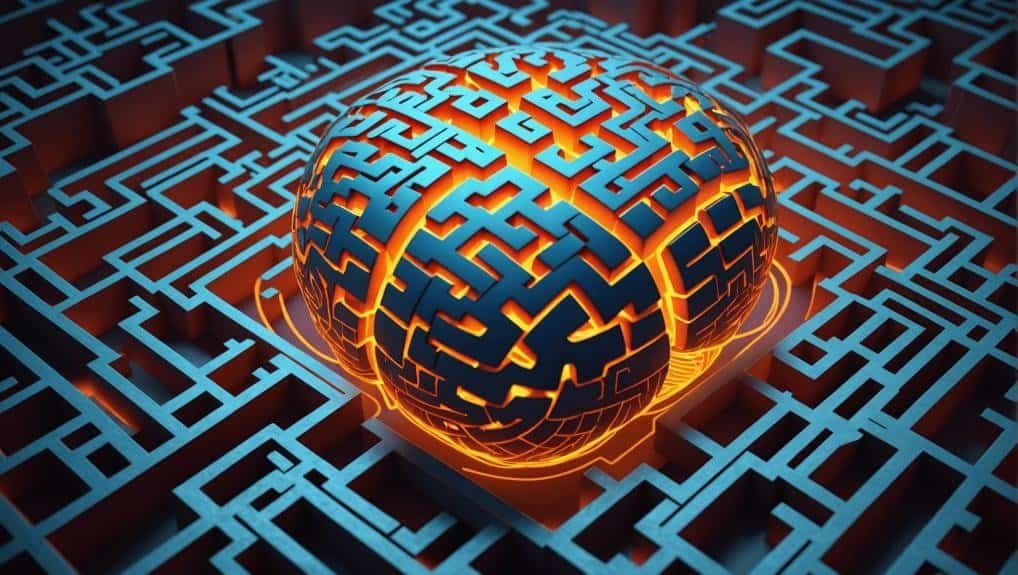Unlocking the Secrets of Human Perception
As we explore the intricate workings of human perception, we uncover a captivating domain where our senses intertwine with cognition to shape our understanding of the world. The complexities involved in how we perceive reality go beyond mere observation and touch upon the very essence of our being. By dissecting the mechanisms behind our perceptions, we begin to unravel a tapestry of mysteries that hold the key to revealing the secrets of our mind's eye, offering a glimpse into the enigmatic processes that govern our interactions with the environment.
Key Takeaways
- Expectations, experiences, and cultural background shape perception.
- Brain processes sensory information to construct perceptions.
- Principles of visual perception include figure-ground relationship and depth perception.
- Depth perception uses cues like binocular disparity and motion parallax.
- Perceptual stability ensures continuity in recognizing objects.
Factors Influencing Human Perception
In understanding human perception, we explore the intricate interplay of various factors that intricately shape how we interpret and make sense of the world around us. Expectations, experiences, emotions, and cultural background all contribute to our perceptual processes.
Our past encounters and beliefs form a lens through which we view and understand our surroundings. These factors create a perceptual set, influencing what we notice and how we interpret stimuli.
Cultural norms further mold our perceptions, guiding us towards certain interpretations and away from others. Understanding these pivotal factors is essential in unraveling the complexities of human perception and shedding light on how we construct our reality.
The Role of Brain in Perception
The essential workings of human perception lead us to examine the profound influence the brain exerts on shaping our interpretations of the world, particularly in the domain of perception. Our brain acts as the command center, processing sensory information received from the environment and constructing meaningful perceptions.
Through complex neural pathways and connections, the brain decodes signals from our senses, allowing us to perceive the world around us. Various regions of the brain, such as the visual cortex and the parietal lobe, play vital roles in processing different aspects of perception, like color, depth, and motion.
Additionally, the brain's ability to adapt and rewire itself, known as neuroplasticity, influences how we perceive and interpret stimuli, highlighting the dynamic nature of our perceptual experiences.
Principles of Visual Perception
Investigating the intricate mechanisms of visual perception reveals a profound understanding of how our minds intricately decode and interpret the visual world around us. Visual perception principles are fundamental to our understanding of how we make sense of the visual information we receive. Here is a breakdown of key principles:
| Visual Perception Principles | Description | Example |
|---|---|---|
| Figure-ground relationship | Organizing scenes into main objects and their surroundings | Recognizing a silhouette against a bright background |
| Form perception | Rules of grouping like proximity, continuity, and closure | Grouping dots to form a pattern |
| Depth perception | Estimating object distance and full shape | Judging the distance of a car on the road |
| Visual illusions | Playing with our visual system to understand perception | Seeing an optical illusion artwork |
| Motion perception | Inferring speed and direction of moving objects | Judging the speed of a passing train |
Understanding Depth Perception
Within the domain of visual perception, depth perception stands as a fundamental aspect in our ability to accurately perceive and interact with the three-dimensional world. It utilizes various cues, including binocular disparity, motion parallax, and monocular depth cues like interposition and linear perspective.
By integrating information from both eyes and interpreting visual signals, our brain can estimate distances, sizes, and shapes of objects in our environment. This ability is essential for tasks like driving, sports, and even simple activities like reaching for objects. Depth perception allows us to navigate our surroundings effectively, avoid obstacles, and maintain spatial awareness.
Understanding the mechanisms behind depth perception sheds light on how our brain constructs a coherent representation of the world around us.
Importance of Perceptual Stability
Perceptual stability, a foundational aspect of human cognition, plays a pivotal role in our ability to maintain a consistent understanding of the world despite varying external stimuli.
- Ensuring Continuity: Perceptual stability allows us to perceive objects as stable entities even as they move or change in appearance.
- Facilitating Recognition: It aids in recognizing familiar objects under different conditions, such as identifying a friend in varying lighting conditions.
- Promoting Adaptation: Perceptual stability helps us adapt to new environments by providing a sense of consistency and coherence in our perceptions.
This stability is essential for our mental framework, enabling us to navigate the world with confidence and comprehend the ever-changing stimuli around us.
Conclusion
To wrap up, delving into the intricacies of human perception has been a fascinating journey. Through understanding the factors influencing perception, the role of the brain, principles of visual perception, and the importance of depth perception, we've revealed the secrets of how we make sense of the world around us.
It's like peeling back the layers of an onion – uncovering deeper insights into our cognitive processes and how we navigate our surroundings.








